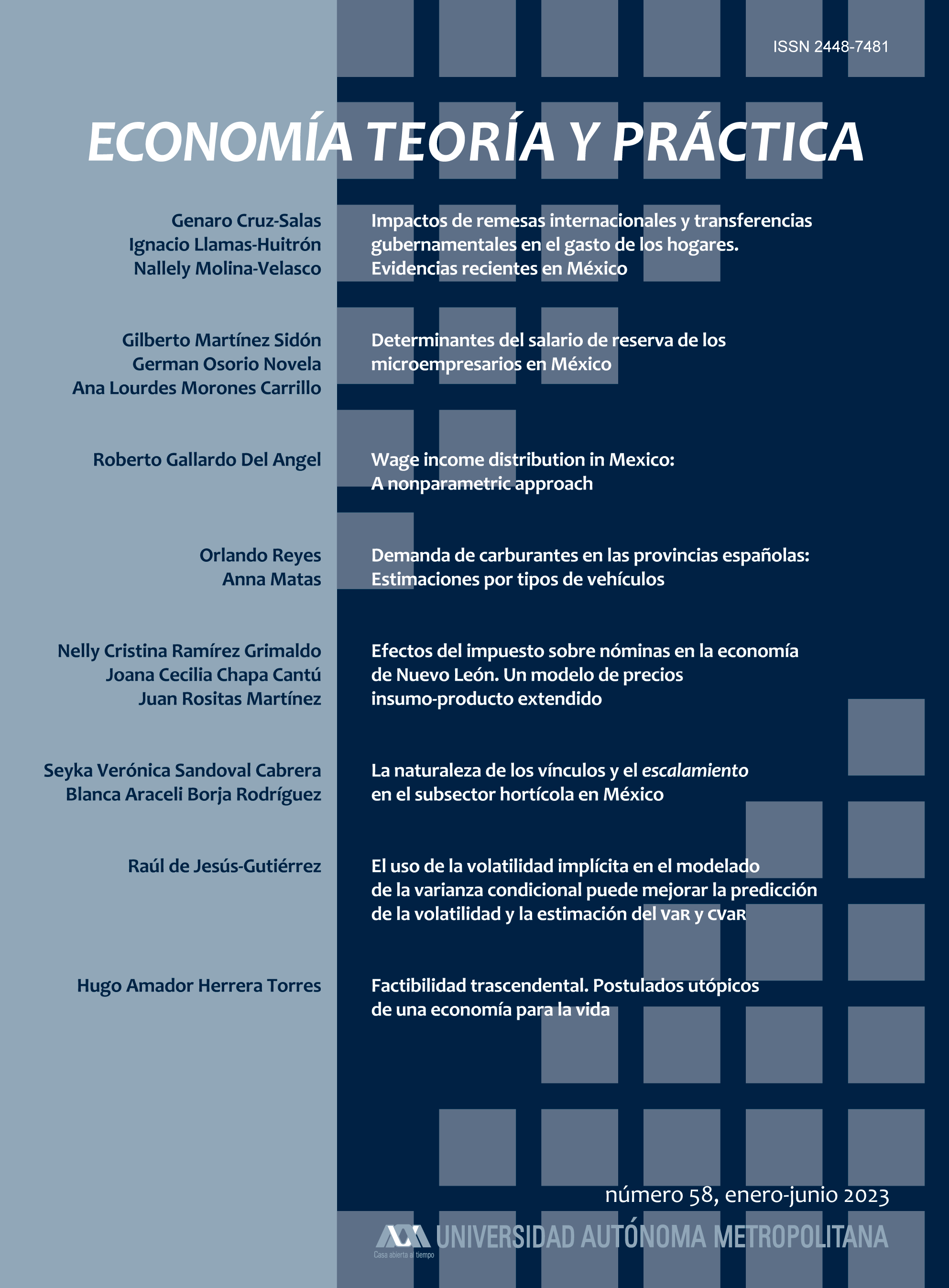Copyright (c) 2022 Economía teoría y práctica

This work is licensed under a Creative Commons Attribution-ShareAlike 4.0 International License.
Abstract
This paper offers an analysis of wage income inequality for Mexico and offers some insights about welfare
improvements for several categories of workers. We analyze real wage distributions at different
points of time, using mainly nonparametric techniques. Kernel densities and smoothing techniques are
used to analyze changes in the distribution of wages and labor supply for the first quarters of 2010 and
2020. We also use stochastic dominance analysis to observe welfare improvements for each category of
workers and the Wasserstein distance to confirm changes in wage inequality. Our main results show
that overall wage income inequality decreased, though the change is small and the categories that improved
are those traditionally considered informal and low human capital workers, such as young
people, workers with only elementary education and manufacturing or agricultural workers. The welfare
of these groups also improved during the same period, yet welfare gains are negative for highly
educated and experienced workers with a high level of human capital, including unionized and government
or health sector workers. Intra-group income distribution became more unequal for these workers.
The results contradict the technological-bias change found during the initial years of free trade and
market reforms in the 1980s and 1990s.
Keywords: Wage inequality, technological-bias change, welfare gains
JEL classification: J31, J24 and O33
References
- J. Airola and C. Juhn. Wage inequality in post-reform mexico. IZA Discussion Paper series, No. 1525, 2005.
- L. A. Bell. The impact of minimum wages in mexico and colombia. Journal of labor Economics, 15(S3):S102{S135, 1997.
- M. Bosch and M. Manacorda. Minimum wages and earnings inequality in urban mexico. American Economic Journal: Applied Economics, pages 128{149, 2010.
- W. W. Cortez. What is behind increasing wage inequality in mexico? World Development, 29(11):1905{1922, 2001.
- G. Esquivel and J. A. Rodr guez-Lopez. Technology, trade, and wage inequality in mexico before and after nafta. Journal of Development Economics, 72(2):543{565, 2003.
- D. Fairris. Unions and wage inequality in mexico. Industrial & Labor Relations Review, 56(3):481{497, 2003.
- D. Fairris, G. Popli, and E. Zepeda. Minimum wages and the wage structure in mexico. Review of Social Economy, 66(2):181{208, 2008.
- G. H. Hanson and A. Harrison. Trade liberalization and wage inequality in mexico. Industrial & Labor Relations Review, 52(2):271{288, 1999.
- W. Maloney and J. Mendez. Measuring the impact of minimum wages. evidence from latin america. In Law and Employment: Lessons from Latin America and the Caribbean, pages 109-130. University of Chicago Press, 2004.
- D. Newmark, M. Schweitzer, and W. Wascher. The effects of minimum wages throughout the wage distribution. NBER working paper, (7519), 2000.


